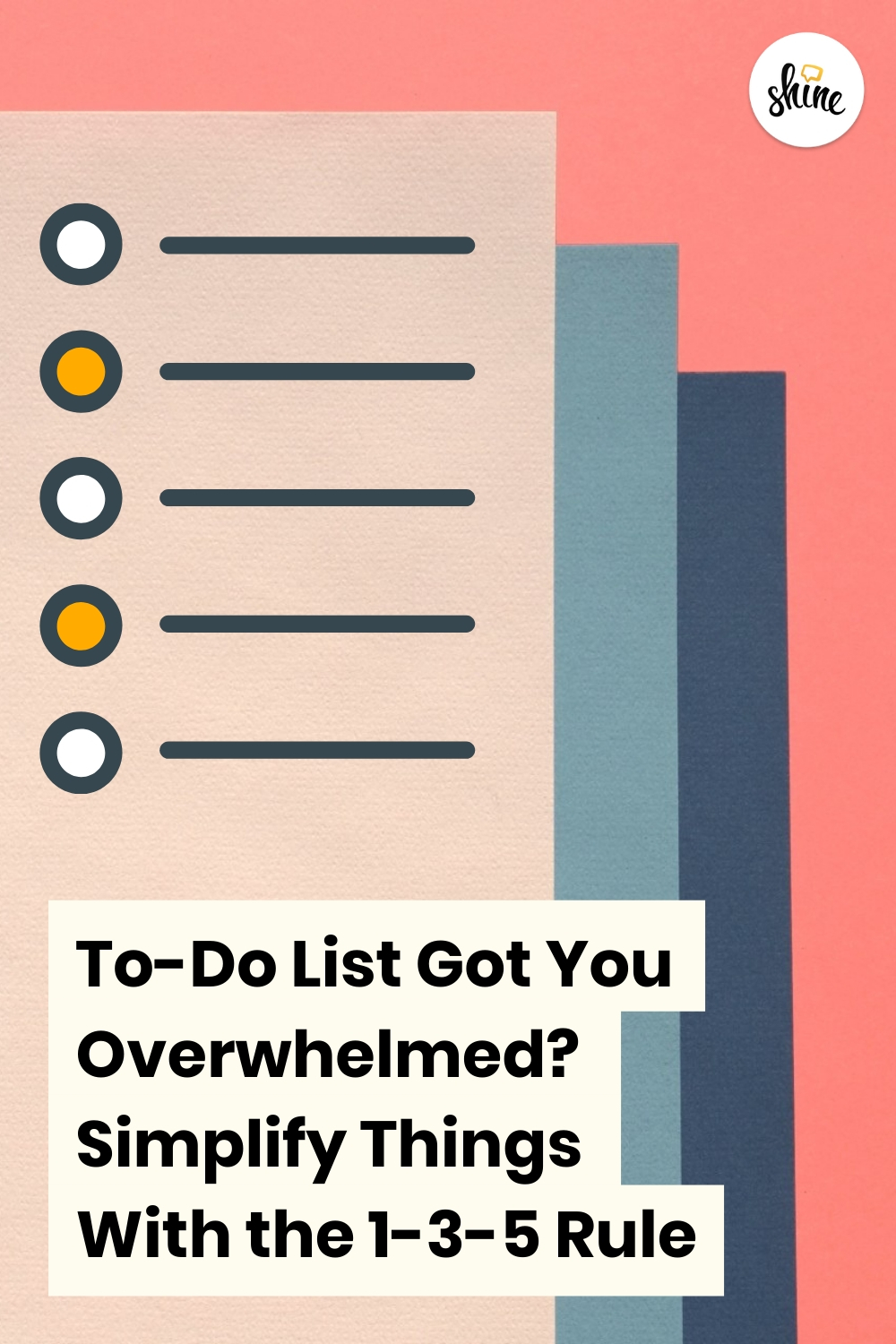How To Simplify To Do List
The "me" that writes my to-practice listing is super ambitious—she thinks I'll breeze through "Typhoon presentation," waltz correct by "Ship all those emails," and vanquish "Audit process?????" all before noon. And so, she'll tackle at to the lowest degree xv more things earlier the sun slowly dips beyond the horizon.
The me that actually does the to-do list?
She's human.
She gets distracted by email, gets in her ain way when something feels daunting, gets pulled into unexpected meetings, breaks the coffee auto and spends xv minutes having to set up it, and takes at least 5 times longer than she thought to complete a task. (She likewise apparently loves writing in the tertiary person?) And, typically, she ends the twenty-four hours with a to-do list half done—feeling overwhelmed and behind when the clock strikes 6 p.m.
Feel familiar?
Fifty-fifty though to-do lists have been around since at to the lowest degree the 1700s, we're still pretty bad at writing them. In fact, experts say 41 pct of to-exercise list items are never completed. And a 2012 LinkedIn poll showed about 90 pct of professionals don't accomplish everything they planned for the day.
41 pct of to-do list items are never completed.

Two main reasons why: We overplan how much we can tackle and underestimate how long each task will take us.
Nosotros write our to-exercise lists for a mythical version of ourselves that's never not productive. We stuff our to-exercise lists with all the things nosotros could practice if we had light amplification by stimulated emission of radiation focus for eight hours straight. Just research shows we just have near three productive hours in a given eight-hour workday.
We write our to-do lists for a mythical version of ourselves that's never non productive.

And and so at that place's the planning fallacy. Humans are notoriously bad at estimating how long it'll accept to complete a task—nosotros underestimate like pros. So fifty-fifty when we practice get to that matter on our listing, information technology always tends to take longer than nosotros call up, pushing back all those other tasks.
So, how can we write ameliorate to-do lists? At that place are lots of strategies out there (including swapping a to-do listing for a to-be list), merely one of the best ones I've seen recently is the 1-3-5 dominion.
How to i-three-5 Your To-Do List
This dominion takes into consideration our to-practise listing overstuffing and the planning fallacy. It comes from Alex Cavoulacos over at The Muse. Her to-practice list theory: "On any given twenty-four hour period, assume that you tin merely accomplish one big affair, three medium things, and five modest things," she writes.
To beginning, create 1 master list of everything you demand to do—basically, our typical to-do list style.
Then, employ that list to create a more realistic daily to-do list. On another sheet of real/app/cloud paper, create another listing with the buckets Cavoulacos mentioned—one big, iii medium, and 3 modest.
Your list will look something like this:
Big
●︎
Medium
●︎
●︎
●︎
Pocket-sized
●︎
●︎
●︎
●︎
●︎
And then, utilise your primary to-do list to fill in those blanks based on what'southward important for you to get done that mean solar day and how long it'll have. Peradventure a "large" task requires a few hours, a "medium" task one hr, and a "small" xv to 30 minutes. If you tin can, Cavoulacos recommends leaving a few of the "small" and "medium" lines blank, too, for those unexpected urgent assignments that always seem popular upward.
Once it'southward washed, smash—at present you know where to focus your energy for the day.
Sounds simple, right? But for someone like me who's used to an "all the things are urgent" to-do listing, it's tough to narrow down my priorities. Simply Cavoulacos says that's the point—the 1-iii-5 rule forces yous to become real most the amount of time you have and become intentional with your focus.
"Similar it or not, you simply take then many hours in the mean solar day and you're simply going to get a finite number of things done," she writes. "Forcing yourself to (create) a 1-iii-v list means the things you get done volition be the things you chose to do—rather than what just happened to become done."
Retrieve: Be Specific and Actionable
When yous're writing out your big, medium, and small tasks, make certain you're also making them actionable and specific, as well. When nosotros add vague tasks to our lists (meet: my "Audit procedure?????" note from earlier), we add together an actress mental hurdle of trying to figure out where to fifty-fifty start. A better way: Write a chore as if someone else could pick it upwardly and accept some sort of idea where to start.
When we add together vague tasks to our lists, we add an extra mental hurdle of trying to figure out where to even commencement.

"Take the few actress seconds, while you're in planning mode and writing the list, to be equally specific equally you tin exist, then that when you're taking on a task on the wing, yous tin can just get it washed," Maura Thomas, author of Personal Productivity Secrets told Fast Company. "For example, instead of writing 'expense report' on your to-do list, write 'enter receipts into spreadsheet.'"
With this move, "Inspect process?????" might become "Write pro/con list of current production process." Feels better, correct? (I know it does for me.)
Next time you sit downwards to write that to-do list, effort the 1-iii-five rule and see how it goes. Maybe trying to complete nine things is still as well much—you're more than of a 1-3-2 kind of person. Or, maybe you can handle more, you lot 1-v-6-er, you.
What matters almost is recognizing how much you lot can really get done in a day and writing a specific, actionable to-do list to match. The more you do that, the closer your to-do listing writing self and doing self can become.
You still won't go everything done, but y'all'll end the mean solar day feeling a piffling less overwhelmed and behind.
Read next: Why Your Small Wins Matter More than a Big #GlowUp Moment


Source: https://advice.theshineapp.com/articles/to-do-list-got-you-overwhelmed-simplify-things-with-the-1-3-5-rule/

0 Response to "How To Simplify To Do List"
Post a Comment